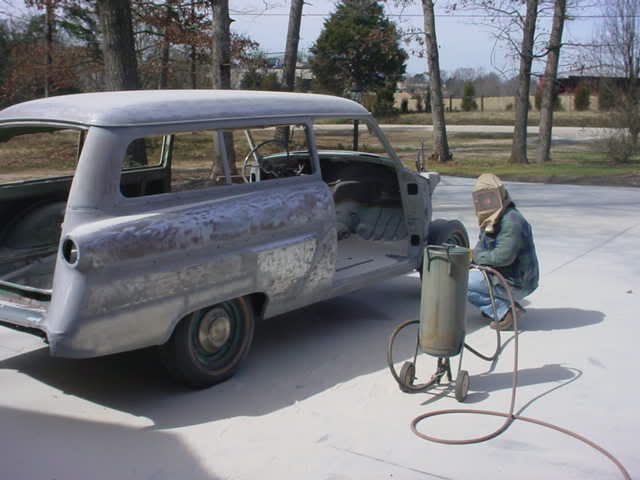5 Essential Rules for Sandblasting
By on May 13 2015

There is no magic involved when it comes to media blasting only a magic touch.
It is difficult to blast without causing some form of damage and still achieving a clean surface. With patience, time, and these 5 essential principles, you can be successful in media blasting with the least amount of undesirable outcomes:
- Select the Correct Type of Media There are numerous types of media available. Some are good for certain applications and others are not. Each form of media has a different hardness and therefore will react with metal differently. Some media can get so hot that it embeds itself in metal on contact. A good example is crushed glass. Crushed glass is approximately the size of the grain of table salt not to be confused with glass beads, which are much larger. Crushed glass and glass beads are typically used in totally different applications.
- Blasting PSI Most sandblasters blast at about 125+ PSI. This will strip metal pretty quickly. It also creates heat and is very aggressive on the metal's surface. Depending on the media, it could even remove metal. However, some applications call for a lower PSI. A comfortable PSI for sandblasting a car body panel is 45-65 PSI. This could differ depending on the surface being blasted.
- Blasting Tip Size Many sandblasters use a #6 through #8 tip. A good rule-of-thumb to remember is that the smaller the tip is, the more control over media you have. Smaller tips also allow less media to hit the metal at once, causing less pressure. (Choosing a correct nozzle also must correspond with a number of factors, including the size of your hose, the capacity of your machine, and the amount of air available in cfm)
- Time As mentioned above, time and patience is critical in helping you achieve the sandblasting results you want with minimal damage. Using a small tip and blasting at a moderate PSI should take more than a few hours. You can use a larger tip and higher PSI, but odds are that you will not be happy with the end result if you are in a hurry to get the job done.
- Blaster Technique/Experience This almost goes without saying. You want a blaster who has experience and is dedicated to providing quality. It is not recommended to blast on your own unless you have taken the proper safety precautions and equipped yourself with the knowledge to follow through on your work.
The bottom line: Media blasting using the proper technique requires the right equipment, enough time, and knowledgeable experience to get the job done. Follow these simple rules and you can guarantee that you'll be pleased with the results.
Have any sandblasting questions? Head on over to sandblastingmachines.com for more information and chat with an expert!






